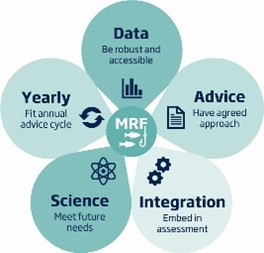End 2024, the International Council for the Exploration of the Sea (ICES) published a Roadmap for Marine Recreational Fisheries (MRF). This document aims to “guide the development of robust MRF assessments through data and methodological improvements.” According to ICES, the roadmap will ensure that the impact of MRF is included as a vital part of sustainable fisheries management.
A landmark achievement benefitting scientific underpinnings in favour of Marine Recreational Fisheries (MRF)
With the publication of this report, ICES has developed a pathway to embed Marine Recreational Fisheries (MRF) into its advisory processes and scientific assessments while also filling currently existing knowledge gaps on the sector.
Furthermore, ‘Marine Recreational Fisheries (MRF) has a significant impact on economies, coastal communities and environments, society, and fish stocks alongside creating important health and wellbeing benefits for its participants’ as per ICES. Despite the sector’s impact, decisions regarding “stock assessments, conservation measures, and sustainability have largely centred around the activities of commercial fishing fleets. Meanwhile, recreational fisheries have remained under the radar” they further add.
In the roadmap, ICES warns however that “if MRF catches continue to be excluded, we risk failing to meet conservation and societal benefit objectives”.
Photo credits: EAA, 2025
Further guidance on MRF via the newly elaborated DAISY model
Data gaps, inconsistent reporting, and resistance from some actors still pose challenges to integrating MRF into fisheries management. Also, according to ICES, there is also a debate on how catches are allocated between recreational and commercial sectors.
To address this, ICES has developed the DAISY model which highlights five crucial elements for drafting scientific advice on the sector.
- Data must be robust and accessible
- Advice must be consistent and agreed upon the methods
- Integration of MRF into stock assessment are needed
- Science is required to meet future needs
- Yearly implementation of the above-mentioned steps within the annual advice cycle
Twelve recommendations for a data-driven approach in view of inclusive, sustainable fisheries management
ICES is convinced the document must be ready to provide scientific advice for “inclusive, sustainable fisheries management – one where MRF is fully integrated”. With the DAISY model, it has elaborated twelve recommendations. These recommendations “provide a roadmap for provision of MRF advice by ICES” according to the organisation.
Important recommendations are among others:
An agreed process, approach, and format for catch advice that includes MRF should be generated.
Impact on fish stocks must be better studied. This as post-release mortality studies are lacking and ICES must work to develop new approaches, particularly for data-limited fish stocks.
Advice often translates into Catch allocation between sectors. ICES writes that methods are need for allocation of catches between sectors that account for social and economic benefits alongside biological sustainability to maximize the benefit to society from fish stocks.
Human dimensions and the link between motivation and catch rates must be increased to better understand and predict responses to management measures.

Photo credits: ICES, 2024
Markus Lundgren, EAA’s Sea-subgroup Chair writes: "The ICES roadmap marks an important step towards a formal recognition of (sea-) angling under the EU’s Common Fisheries Policy (CFP). Backed with these scientific evolutions, policy discussions on the inclusion of MRF into the CFP can now be executed based upon up-to-date and peer-reviewed ICES advice and assessments.”
More information:
The ICES Roadmap on MRF can be found
here
The press release issues by ICES on the roadmap’s publication can be found
here